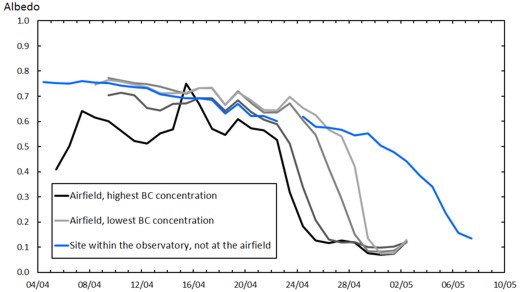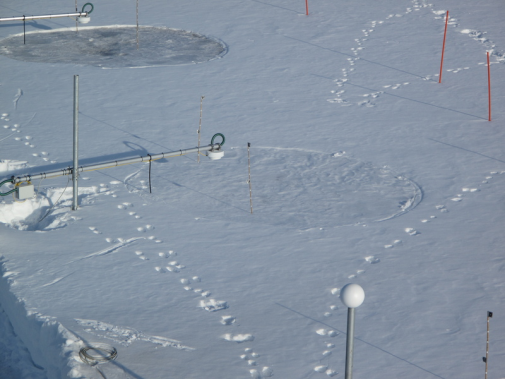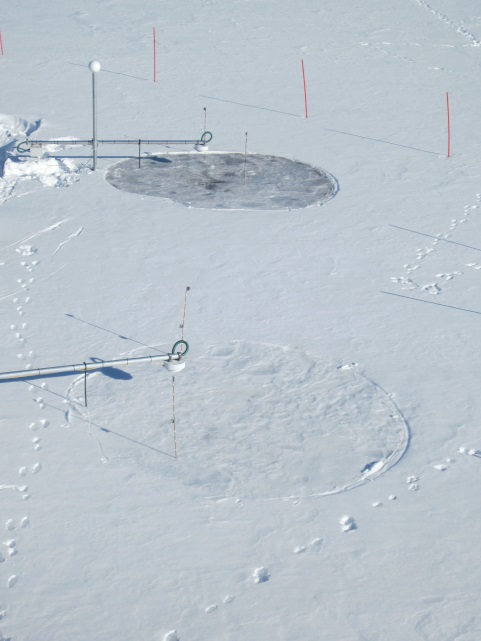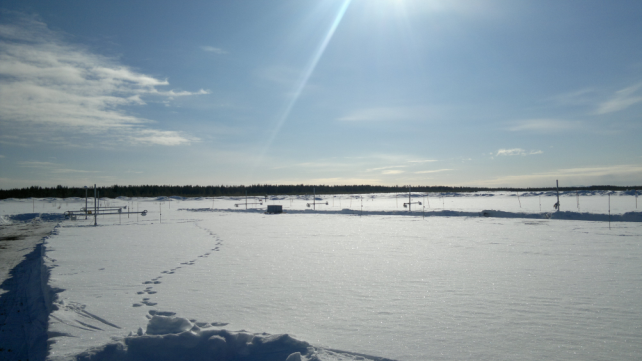

Demonstration experiments
The effect of black carbon on the albedo of snow, i.e., how well the snow reflects sunlight, and melting was demonstrated in a series of experiments conducted in 2011-2013.
The experiment demonstrated very clearly the effects of soot on snow: the albedo decreased, the snow grain size, the whole stratigraphy, temperature profile, and melting rate in the snow pack changed compared with the reference site.
The figure below shows the black carbon effect on albedo and melting over four black carbon deposit spots with different black carbon concentrations at the Sodankylä air field experiment area – the grey lines – and a reference area within the FMI Sodankylä observatory, the blue line, in spring 2013. Within the observatory no additional black carbon was deposited on snow. It is obvious that the black carbon deposit areas melted approximately two weeks before the comparison area.

Fig. Albedo of snow at solar noon over four BC-contaminated snow spots at Sodankylä air field and a snow field within Sodankylä observatory in April - May 2013. Click to enlarge.
Experimental arrangements
In the first campaign black carbon particles were produced by burning various organic materials in a wood-burning stove on a farming field in southern Finland in the late winter 2011. The smoke was lead through a pipe, cooled by snow surrounding the pipe, into a chamber on top of the snow.
In 2012 and 2013 the soot was acquired from chimney sweepers and blown into a cylindrical chamber lying on snow. In 2012 the experiment was conducted in Jokioinen in southern Finland and in 2013 at the Sodankylä air field in Lapland.


Photos: Albedo measurement instrumentation over the two first deposit areas

Photo: Experimental field in the Sodankylä experiment in 2013
In all experiments, snow samples were taken from the deposit and reference areas and analyzed for black carbon. The albedo of the snowpack and the snowpack thickness were measured both over the deposit and reference areas. A physical characterization of snow stratigraphy was done, including thickness, density, hardness, grain size and shape, and temperature. In addition, the spectral irradiance through the snow was measured.
The experiments were contributing both to MACEB and other projects and they were organized by the Finnish Meteorological Institute and University of Helsinki, other participants coming from the Finnish Geodetic Institute and the University of Iceland.

